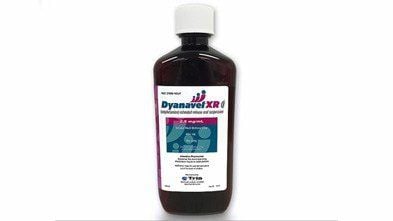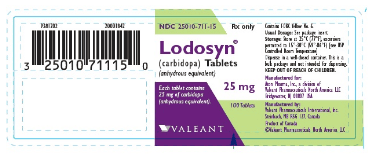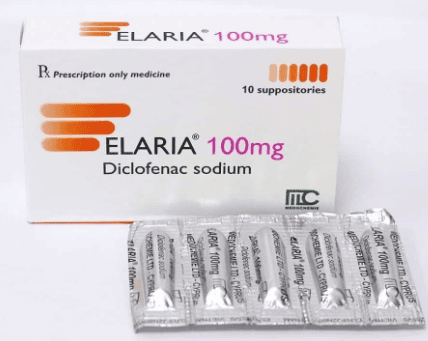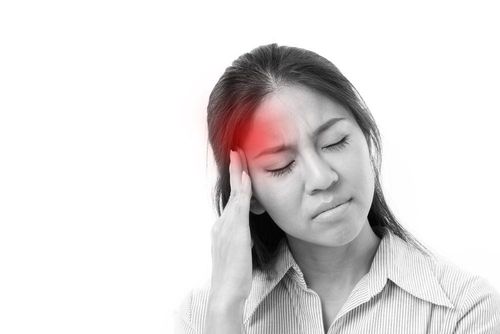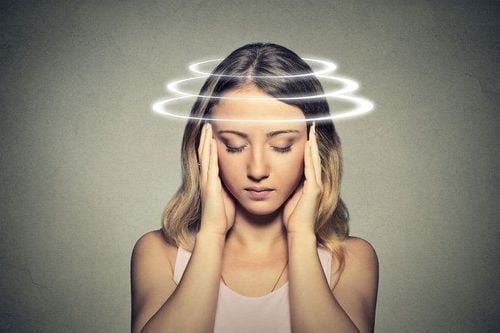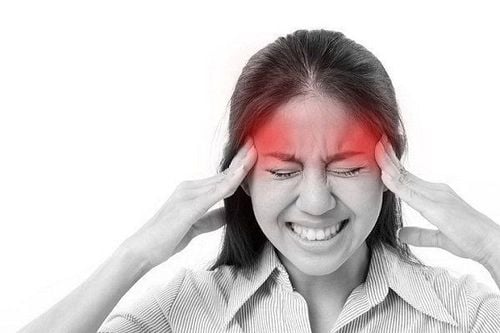This is an automatically translated article.
Article written by MSc Le Thi Thanh Huong - Emergency Medicine Doctor, Emergency Department - Vinmec Central Park International General Hospital
Migraine headaches can appear very early in childhood or start occurring in early adulthood. The disease occurs more often in women than in men. It is also familial and affects all ages.
1.What is a Migraine (migraine) headache? Migraine headache is a condition often characterized by severe headache on one side of the head and neurological fatigue. Patients often feel headache accompanied by other symptoms such as nausea, vomiting, sensitivity to light and sound, sometimes with transient signs (aura) such as visual disturbances, difficulty speaking, Numbness or paresthesia on one side of the face or limbs.
These headaches usually last for hours to days and are sometimes so severe that they interfere with your usual activities.
2. Migraine types Migraine with aura: The person experiences “warning” signs of an impending migraine, such as seeing flashes of light. Migraine without warning: This is the most common type, the pain comes on suddenly without warning. Migraine with transient warning but without headache, also known as silent migraine: warning signs or other symptoms present but no headache occurs. The frequency of migraine headaches also varies from person to person. Some people suffer from frequent headaches, up to several times a week, while others have occasional migraines. The symptom-free interval between attacks can be years.
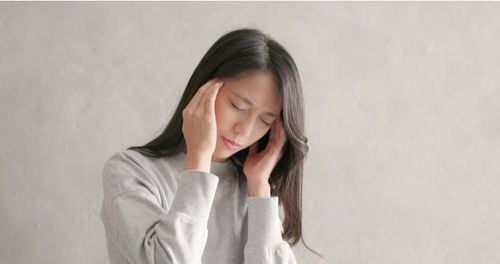
3. Factors that promote migraine headaches Although the cause is unknown, a number of environmental and genetic factors contribute to migraine headaches, including:
Hormonal changes In women, headaches can often occur in the middle of the menstrual cycle, before or during menstruation, during pregnancy or menopause. Taking hormonal medications, such as birth control pills or hormone replacement therapy, can also make migraines worse. However, a rare case of pain occurred when they took these drugs. Certain beverages such as alcohol (especially wine), beer, and drinking too much caffeine (coffee). Stress at work or in life can also trigger migraines. Sensory stimuli such as bright, bright lights, loud sounds, or strong, strong odors (such as perfume, paint, cigarette smoke, etc.) have the potential to cause headaches in some people. . Sleep changes including insomnia, oversleeping or jetlag. Physical factors such as vigorous physical activity, including sex, can sometimes trigger migraines. Changes in weather or pressure can also contribute to triggering a migraine attack. Certain foods such as salted or processed foods or additives such as MSG and preservatives can also cause migraines. In addition, if you have the following risk factors, your chances of getting a migraine are higher:
Family history of the condition Age, usually the most likely to get a migraine in age 30 and pain severity decreases every 10 years Gender, women are 3 times more likely than men Hormonal changes during menstruation or pregnancy or menopause, pain usually improves after menopause
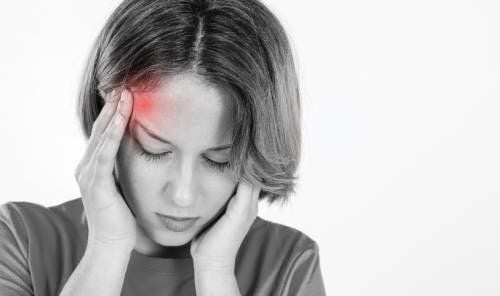
4. Symptoms of a Migraine Headache
The disease usually progresses through 4 stages including prodromal, transient signs, migraine with symptoms and phase after the headache. However, not everyone has all of these stages.
4.1 The prodromal phase A day or two before a migraine attack, you may notice warning signs of an impending attack, including:
Constipation Mood changes, from sad to depressed excitement Cravings Stiff neck Increased thirst and increased urination Yawning frequently 4.2 Aura phase Some people may experience transient warning signs before a migraine attack occurs. Each symptom begins slowly, becomes more apparent over a few minutes, lasts for about 20–60 minutes, and then begins to disappear.
This stage usually has the following manifestations:
Visual disturbances, such as seeing many points of light, flashes of light or various shapes Temporary loss of vision A stinging sensation in one arm or legs Numbness or weakness on one side of the face or body Difficulty talking Hear noises or music in the ear Can't control body movements 4.3 Migraine episode with other symptoms Pain Migraine headaches usually last 4 to 72 hours if left untreated. During this time, you may experience:
Pain on one side of your head, but sometimes all over your head Sharp or pounding pain Pain that increases when exposed to light, loud sounds, or sometimes when sensitive to odors. Nausea and vomiting
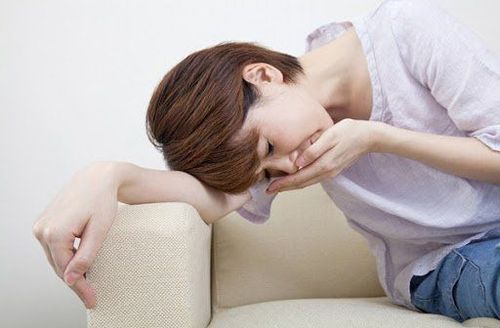
4.4 Post-Migraine Stage After experiencing a migraine, most people feel exhausted, tired, no longer alert, and need to rest for the day. However, some people say they feel more elated.
Note: Sudden head movement after a headache can cause the headache to return again.
5. Some Home Remedies for Migraine Headaches You can try some of these home remedies for migraine relief:
Rest, close your eyes and lie down. relax in a quiet room without too much light Change into loose, airy clothes or cool the forehead Drink plenty of water, stay hydrated To prevent migraines, you should change their lifestyle in a healthier, more positive direction:
Find ways to manage stress in work and life such as exercising, practicing meditation, doing biofeedback therapy. These strategies can help reduce the severity and frequency of migraines. Make a note of what you think triggers your migraine to happen, so you can make lifestyle changes accordingly. If you are obese, overweight, lose weight. This can prevent migraines from occurring. 6. When should you see a doctor? If you have a history of headaches, see a change in the pattern of the pain, or feel it differently from other times, see your doctor for a check-up.
When you have any of the following signs and symptoms, you should go to the nearest medical facility immediately as they may indicate that you have a serious health problem:
Headache that comes on suddenly , severe, stabbing pain, and have used common pain relievers (Paracetamol, Ibuprofen) to no avail. Headache with fever, stiff neck, mental confusion, convulsions, double vision, weakness, or difficulty speaking Headaches after a head injury, especially as the pain gets worse Chronic headaches , pain worsens with coughing, labored breathing, straining, or sudden movements A new headache after age 50

7. What does a doctor need to do to diagnose a migraine? The doctor can rely on the examination of the patient's symptoms to make a diagnosis. Examination of neuromotor signs helps to rule out headaches due to other dangerous causes (eg, brain tumor, bleeding in the brain...).
If the doctor notices suspicious signs or the headache suddenly becomes severe, he or she may recommend some tests, such as: brain MRI or brain CT (depending on the condition). patient and the doctor's doubtful diagnosis).
8. Treatment The goal of migraine treatment is to stop ongoing symptoms and prevent future episodes of headaches.
Many drugs have been developed to treat migraine symptoms, they can be divided into 2 main groups:
Pain relievers used to treat migraine attacks and relieve symptoms. Commonly used medications are NSAIDs, sumatriptan, dihydroergotamine, lasmitidan, opioid pain relievers, antiemetics, etc. Preventive medications can be taken regularly, daily to reduce severity. or frequency of migraine attacks. Options in this group include drugs that lower blood pressure (such as beta-blockers), tricyclic antidepressants, and antiepileptic drugs (valproate, topiramate).
Vinmec International General Hospital is one of the hospitals that not only ensures professional quality with a team of leading medical doctors, modern equipment and technology, but also stands out for its examination and consultation services. comprehensive and professional medical consultation and treatment; civilized, polite, safe and sterile medical examination and treatment space. Customers when choosing to perform tests here can be completely assured of the accuracy of test results.
Please dial HOTLINE for more information or register for an appointment HERE. Download MyVinmec app to make appointments faster and to manage your bookings easily.





